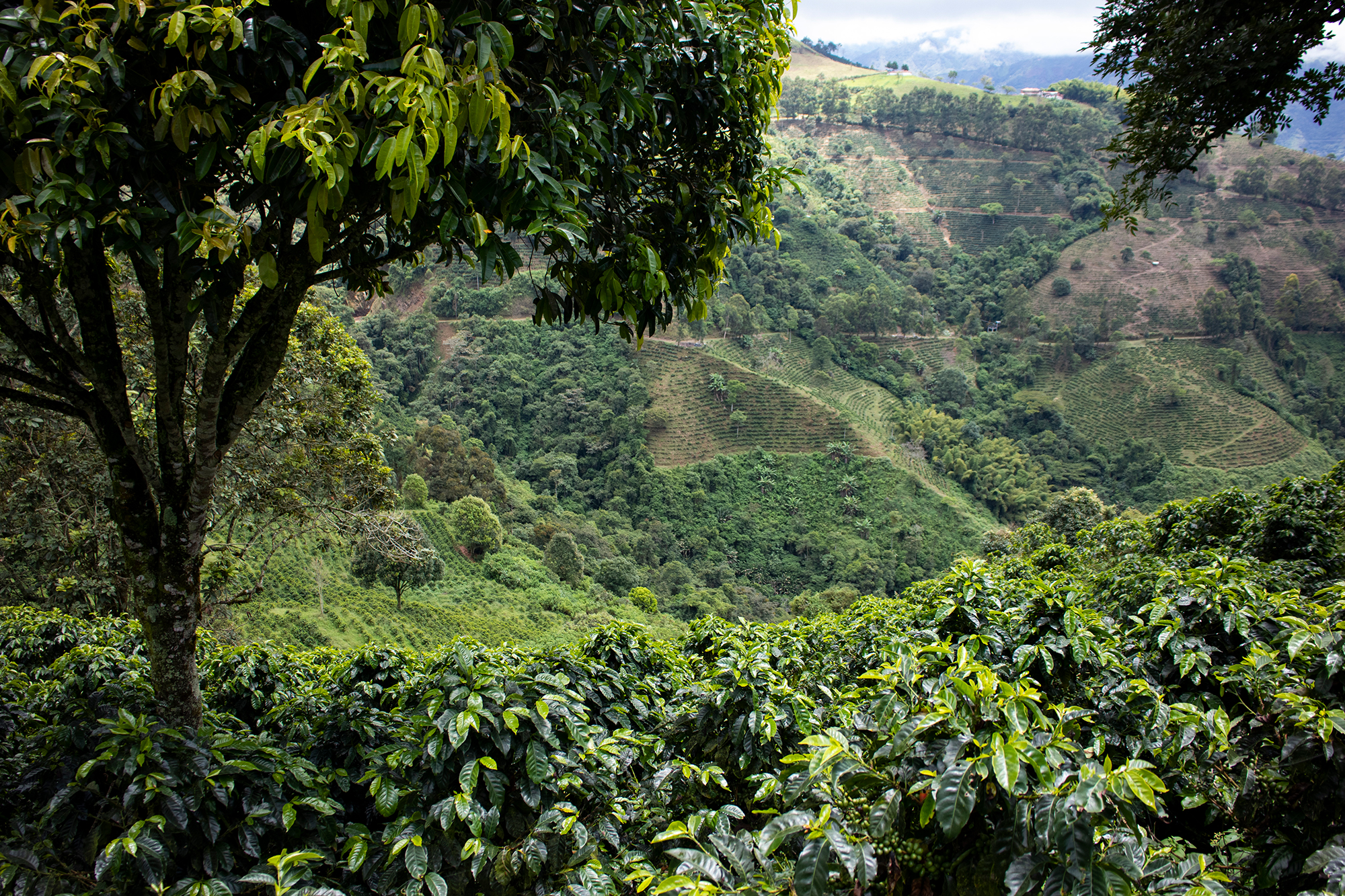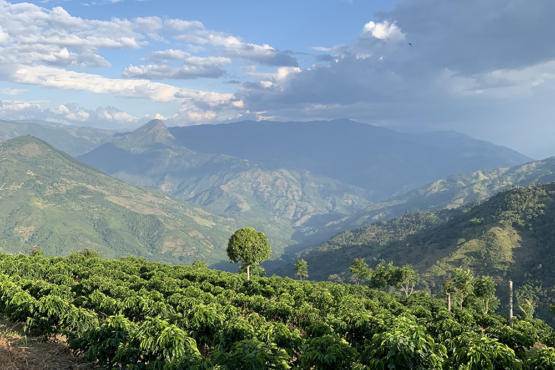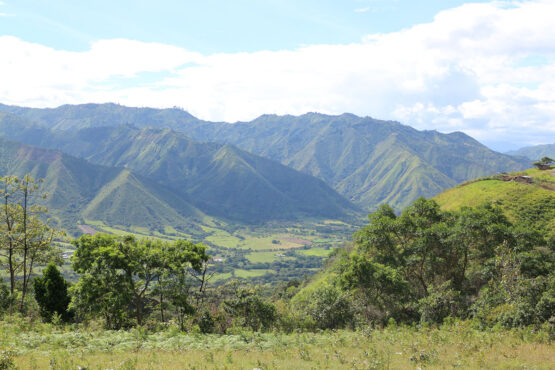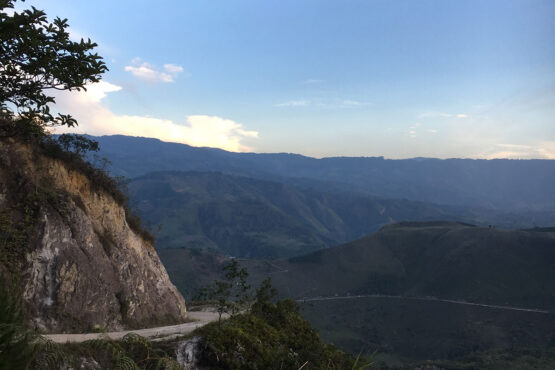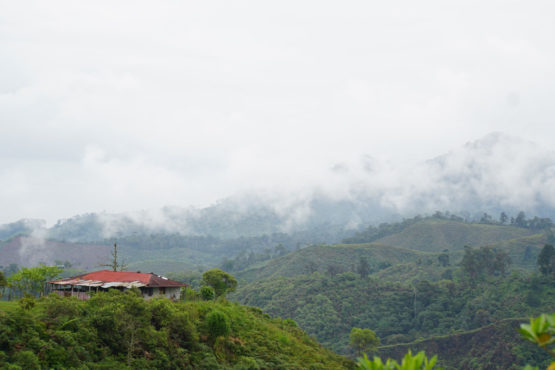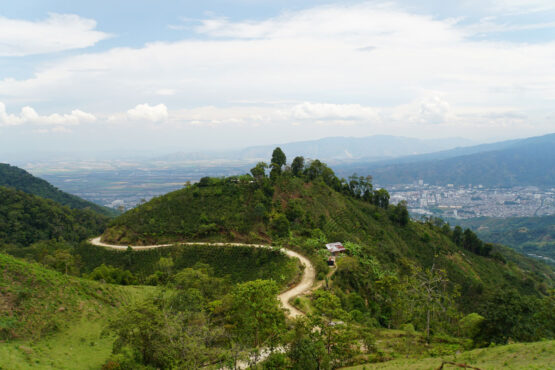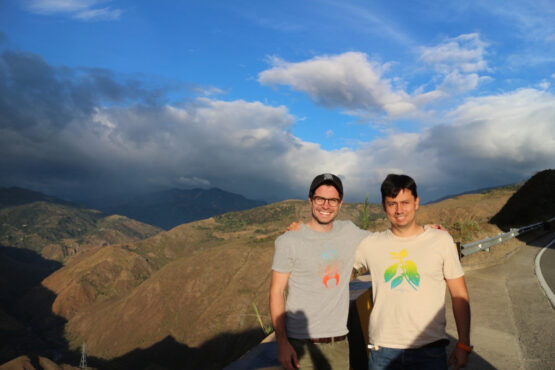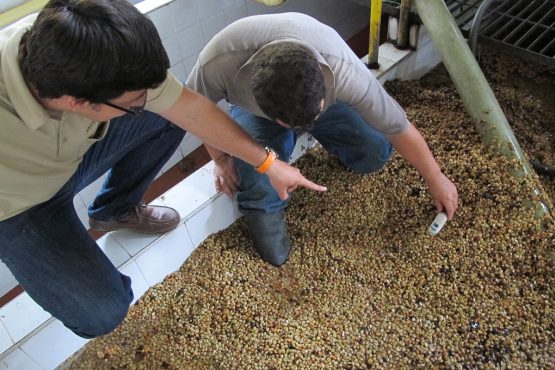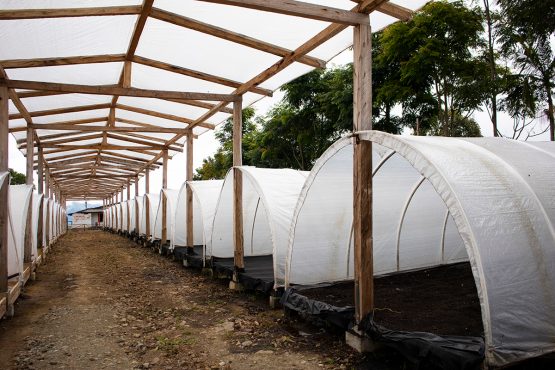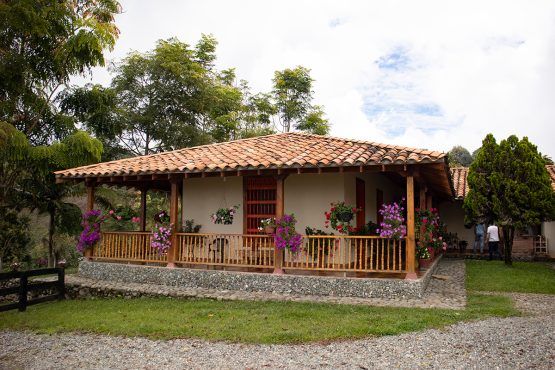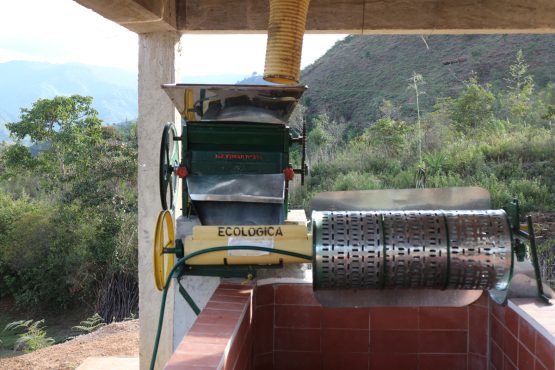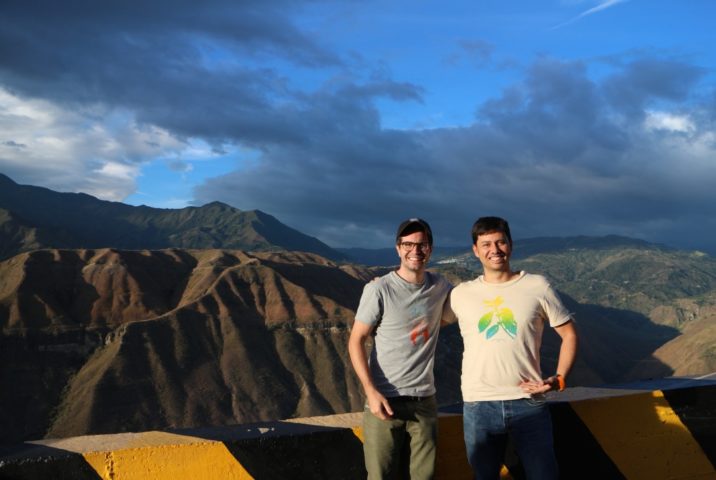El Camino
Sweet and juicy, with citric acidity and caramel sweetness. Red currant, apple and milk chocolate.
El Camino is a special combined lot from three of our favourite producing regions in Colombia, Antioquia, Huila and Tolima, selected by cup quality and profile. Our long-time partners in Colombia, Pergamino, sourced this season’s lot from coffees grown at their family-owned estates in the municipality of Santa Barbara, Antioquia, along with crop grown and processed by smallholder farmers who deliver parchment to their collection points in the municipality of La Plata, Huila and across Tolima.
ABOUT SANTA BARBARA, ANTIOQUIA
Pergamino founders the Echavarría family first began producing and exporting coffee from the municipality of Santa Barbara in the 1980s. Colloquially, the region is known as Antioquia’s “balcony facing beautiful landscapes,” as it sits at an elevation of 1,800m above sea level and towers over an ocean of lush greenery in every direction. The region’s geography, along with its fertile, volcanic soils and high rainfall make it one of Colombia’s most important agricultural centres. Along with coffee, Santa Barbara is known for its mangoes, plantains, and prosperous cattle industry.
The state of Antioquia is located in central north-western Colombia. Coffee was introduced in the latter part of the 19thcentury and has been an intrinsic part of the region’s identity since then. Today, more than 80,00 families grow coffee in the region and their production accounts for 15% of Colombia’s total yearly output. This productive department has 128,000 hectares of coffee, primarily made up of independently owned and managed farms.
Antioquia only recently became more accessible to specialty coffee buyers — largely thanks to a transformation of the department spearheaded by Sergio Fajardo, the forward-thinking governor that led the department between 2012-2016. Sergio transformed Medellín from a violent and dangerous place to a world-class tourist destination with a strong economy. Coffee, and the region’s shift to specialty coffee production, has played a significant role in this transformation.
ABOUT LA PLATA, HUILA
Located in the state of Huila, the municipality of La Plata borders the town of Inza, in the state of Cauca, and forms part of the Macizo Colombiano (‘Great Colombian Massif’). Much like that found in these well-known coffee regions, the volcanic soil in La Plata is perfect for coffee growing. Farmers here also benefit from year-round cool temperatures, abundant access to clean water, and almost exclusively produce coffee from older Caturra trees in plots of land under 2 hectares in size.
The municipality of La Plata has a long history of coffee-growing and agriculture. Along with coffee, the region is known for growing rice, plantain and cacao and for its rich biodiversity. For decades, the centre of town has served as the hub for the local coffee cherry market, as farmers from nearby Inza, Paez and Rio Chiquito (all around 90-minute drives away) would sell their crop here to domestic coffee traders. Recognising the benefits of having a strong presence in town, our long-time supply partners, Pergamino, have established a collection point in La Plata and began investing in and training farmers in the municipality and nearby towns.
Today, operations at La Plata are managed by Felipe Henao, whose brother Leonardo is the Head of Quality Control and Logistics at Pergamino. Felipe has spent many years being Pergamino’s “boots on the ground,” giving him the opportunity to learn the intricacies of the different growing regions. By working side-by-side with many producers, Felipe has also been able to establish meaningful, long-term relationships across the Colombian countryside. This experience made him the ideal point person at La Plata, as the role requires him to be in constant communication with Pergamino’s HQ in Medellin, while making complex purchasing decisions and handling logistics on the field. The team at Pergamino tell us La Plata is difficult to reach, as the hills are sharp and the highway that leads to the centre of town becomes practically impossible to traverse during winter. Their efforts pay off on the cupping table though, with this lot consistently shows a unique vibrancy and clarity.
La Plata is the traditional home of the Yalcón and Nasa (or Páez) people. While few Yalcón communities survive today, the Nasa remain one of Colombia’s largest indigenous groups. During the Spanish invasion of Colombia, many of the Nasa were able to avoid bloodshed by escaping to the rugged hills and high plateaus of the Andes Mountains, where the Spaniards were unable to pursue them. Today, the Nasa economy relies on agriculture, and society is organised into tight knit farming communities who distribute duties equitably under the guidance of cabildos, or locally elected councils. Like many indigenous groups across Latin America, the Nasa have spent decades lobbying for the return of their land rights, finding success in recent years. Their struggle has led to legal recognition of the fundamental rights of indigenous peoples, including recognition of the autonomy of their communal indigenous lands in the 1991 Colombian Constitution.
ABOUT TOLIMA
Coffee from Tolima has historically been very difficult to access due to the region’s isolation and instability. For many years this part of Colombia was under the control of Colombia’s notorious rebel group, the FARC, and as a result, it was unsafe and violent. Since 2012, safe access to this region has been possible as a result of peace talks between the Colombian government and the rebels. Since this time some stunning coffees from small producers have become accessible to the international market.
The word ‘Tolima’ comes from the local indigenous language and means a “river of snow or cloud”. The region sits on the Cordillera Central, in the middle of the three mountain ranges that provide a range of microclimates well-suited to high-quality coffee production. Coffee is the leading agricultural activity in the region, followed by beans and cattle.
The most well-known regions in Tolima for specialty coffee are Planadas and Chaparral in the south. This coffee comes from the areas surrounding Ibagué, which is further north in the state. The city is also known as the “Ciudad del Abanico” or the “city of the folding fan” because when you look at it from the sky the rivers running from the mountains split up the crops of rice and cotton, and it looks like a beautiful handmade folding fan.
Our partners at Pergamino have done much to promote the commercialisation of specialty coffee in Antioquia, Tolima and Huila. Their goal in these regions is to source and support coffee producers in areas where there is a high potential for quality, but limited access to international specialty buyers. To achieve this, they established the Allied Producer Program in 2013, connecting smallholder farmers to buyers who are willing to pay high premiums for great coffee. Not only has the program incentivised quality, but it has also improved the livelihood of the regions’ many coffee-producing communities.
Read more about Pergamino’s work in Colombia here.
HOW THIS COFFEE WAS PROCESSED
The largest portion of this season’s lot was processed at the Echavarría family’s estates in Santa Barbara. Once picked, cherries were transported to the estate’s immaculate onsite wet mill. Here, the coffee was processed under the watchful eye of General Manager Pedro Echeverría Jr. and Director of Quality Leonardo Henao Triana. Coffee was pulped using an electric pulper and placed into fermentation tanks for around 48 hours (depending on the weather).
After fermentation, the coffee was washed and dried in silos for two to three days at a maximum temperature of 45 degrees Celsius. The slow and steady drying ensures even moisture loss and stable water activity.
The portion of the lot that comes from La Plata, Huila and Tolima, was processed at each farm’s ‘micro-beneficio’ (wet mill). After being pulped using a small manual or electric pulper, coffee was placed into a fermentation tank where it spent anywhere between 48 and 72 hours, depending on the weather. Because of the cooler climate in the municipalities surrounding La Plata contributing producers tend to ferment their coffees for longer than usual, and some will often blend two days’ worth of pickings over the fermentation period. Coffee is then washed using cold, clean water.
Once rinsed, the wet parchment was carefully dried (over 10–18 days) on a raised bed with plastic over the top which protects the coffee from the rain and prevent condensation dripping back onto the drying beans. This bed has adjustable walls to help with air flow, and temperature control to ensure the coffee can dry slowly and evenly.
After all parchment was fully dried to the optimal humidity, it was taken to Pergamino’s dry mill for assessment and storage.
WHAT’S IN A NAME
El Camino translates to “The Path” in Spanish. This name was chosen to represent the path forward for coffee production in Colombia, sourced and purchased through a more connected and sustainable model. Our goal with the El Camino line is to facilitate a close, transparent and ongoing relationship between Red Brick and Pergamino, that provides stability and security to all parties along its supply chain.
